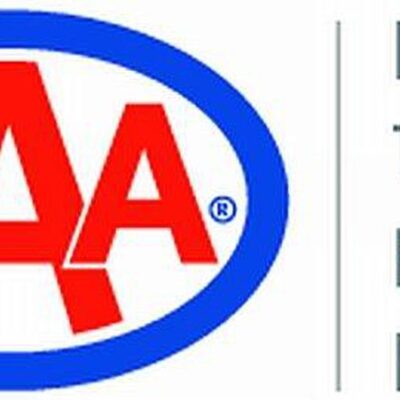- Medicare provides coverage for antidepressants.
- You’ll need a Part D plan or Medicare Advantage plan that includes Part D to get prescription coverage.
- Your costs will depend on your plan and on the specific antidepressant but could be less than 5 dollars for a 30-day supply.
- You’ll pay less for a generic antidepressant than a brand name even when you use your Medicare coverage.
Prior to the expansion of Medicare Part D, depression was often undertreated in adults over 65. However, Medicare has covered antidepressants since 2005.
The Centers for Disease Control (CDC) estimates that under
If you have Medicare Part D or a Medicare Advantage plan that includes Part D, you can get coverage for your antidepressants.
There are six classes of prescription medication that Medicare requires all Part D plans to cover. Medicare members with a Part D plan are guaranteed access to their prescriptions in these classes, known as “protected classes.”
Antidepressants are one of the six protected classes. This means that all Medicare prescription drug plans have coverage for antidepressants. The other protected Medicare prescription classes are:
- Anticonvulsants: Medications to treat seizures.
- Antineoplastics: Medications that treat cancer (chemotherapy).
- Antipsychotics: Medications to treat psychosis and schizophrenia.
- Antiretrovirals: Medications to treat viral infections, primarily HIV.
- Immunosuppressants: Medications that suppress the immune system, used to help prevent the rejection of transplanted organs.
Your antidepressant will need to be prescribed by your doctor to qualify for Medicare coverage. You’ll need to be under the care of a doctor and have your prescription renewed regularly. You’ll also need to have a diagnosis of depression and be prescribed a Food and Drug Administration (FDA) approved antidepressant. Medicare doesn’t generally pay for experimental or alternative treatments.
Not every plan will cover every possible antidepressant, but because antidepressants are a protected class, most antidepressants are covered by all Part D plans. In some cases, you might need to switch from a brand name to the generic form or search your area for a Part D plan that does include your specific antidepressant coverage. Your doctor or pharmacist might be able to guide you on the Part D plan that covers your antidepressant.
Your cost for antidepressants will depend on several factors. The cost of generic antidepressants, for example, is significantly less than the brand name.
The commonly prescribed antidepressant Zoloft can cost as much as $325 for the brand name. The generic form of Zoloft, sertraline, on the hand, costs between $7 and $30, even without insurance coverage.
Whether you use the brand name or generic makes a difference when you use insurance, including Medicare. You’ll pay a higher copayment for a brand name prescription than a generic one. This is because prescription drug plans have a list of covered prescriptions called a formulary. A formulary not only lists all the prescriptions a plan will cover but splits prescriptions into five categories, called tiers.
The drug plan tiers are:
- Tier 1: preferred generic drugs
- Tier 2: generic drugs
- Tier 3: preferred brand name drugs
- Tier 4: brand name drugs
- Tier 5: specialty drugs
You’ll have a higher copayment or coinsurance when your prescription falls on a higher tier. Often copayments on tier 1 can be less than $5, while copayments on tier 4 can include a 40 percent coinsurance cost.
Every plan structures this a little differently, and your costs often depend on your premium and deductible. However, an example formulary structure would look similar to this:
- Tier 1: $3 copayment
- Tier 2: $15 copayment
- Tier 3: $45 copayment
- Tier 4: 40 percent coinsurance
- Tier 5: 40 percent coinsurance
So, let’s look at Zoloft again. The generic form, sertraline, is often a tier 1 prescription, meaning you’d pay $3 after your deductible. If the brand name Zoloft was a tier 4 drug on your plan, you’d pay 40 percent of the retail price of $325, or about $130. The same holds true for most antidepressants. You’ll save money by taking the generic form.
You’ll need a Medicare plan that covers prescriptions to get coverage for antidepressants. Generally, this means you’ll need a Medicare Part D plan or a Medicare Advantage plan that includes Part D coverage. You can read about antidepressant coverage in each part of Medicare below.
- Part A. Medicare Part A is hospital insurance. It doesn’t generally cover prescriptions unless you received them while you’re receiving inpatient care such as in a hospital, nursing home, or rehabilitation facility. Part A will cover your antidepressant while you’re receiving inpatient care, but won’t cover them when you return home.
- Part B. Medicare Part B is medical insurance. It covers things like doctor visits, emergency room visits, urgent care, and ambulance rides. It doesn’t generally cover any prescriptions, including antidepressants.
- Part C. Medicare Part C is also known as Medicare Advantage. It covers everything that parts A and B do, and often includes additional coverage. When this additional coverage includes Part D, antidepressants will be covered.
- Part D.Medicare Part D is prescription drug coverage. All Part D plans are required to cover antidepressants.
- Medigap. Medigap is supplemental insurance that covers some of the out-of-pocket costs of Medicare parts A and B. It covers things like deductibles and copayments. It doesn’t offer coverage for prescriptions, including antidepressants.
An antidepressant is a medication prescribed to treat depression and other mental health conditions. Antidepressants affect chemicals in your brain called neurotransmitters and help ease the symptoms of depression. There are many antidepressants available, and different people respond differently to antidepressants. Your doctor might need to try a few different antidepressant prescriptions for you before you find one that manages your symptoms without side effects.
You won’t always be prescribed an antidepressant when you have a diagnosis of depression. In some cases, especially if your symptoms are mild, your doctor might recommend counseling or lifestyle changes as a first step. However, antidepressants can help some people with depression significantly. Talk to your doctor if you’re experiencing symptoms of depression and think you might need an antidepressant.
Depression is a common but often very serious mental health condition that can affect your everyday life. Depression causes a low mood and loss of energy. Other depression symptoms can include:
Call 911 or go to the ER If you’re having thoughts of suicide or feel like you might harm yourself.
Symptoms aren’t the same in every case of depression. Factors like your gender, life circumstances, genetics, and medical history can impact the depression symptoms you experience. Some people experience mild symptoms while others have more severe symptoms. No matter what symptoms you have and how severe or mild they are, a doctor might be able to help.
Your treatment for depression will depend on things such as your symptoms and prior medical history. Common treatment plans include:
- therapy including private sessions and group therapy
- antidepressants and other medications
- lifestyle changes such as reducing alcohol intake and increasing exercise
Treatment can help you manage your depression and reduce your symptoms. Your treatment plan will be adjusted depending on your progress. You might also be recommended alternative treatments like acupuncture or light therapy.
Finding help if you have depression
The following organizations can help you find a therapist, support group, or other resources if you think you have depression.
- The Institute on Aging’s “Friendship Line” provides free crisis support and therapist referrals for people over 60: 800-971-0016
- The Samaritans HelpLine is a free hotline that provides confidential support 24/7: 877-870-4673
- The National Suicide Prevention Lifeline is a free crisis hotline for support and resource referral: 800-273-8255
- The Substance Abuse and Mental Health Services Administration HelpLine can connect you to resources and make therapist referrals 24/7: 800-662-HELP (4357)
- The African American Therapist Directoryis a list of Black therapists throughout the United States
- The National Hispanic Family Health Helpline connects people to community resources for mental health and overall health: 866-Su Familia (783 -2645)
- The LGBT National Hotline provides support mental health and other concerns for LBGTQ individuals: 888-843-4564
- The Trans Lifeline provides support and connects transgender people to resources: 877-565-8860
- Medicare provides coverage for antidepressants.
- You’ll have coverage for antidepressants when you use a Part D plan or a Medicare Advantage plan that includes Part D coverage.
- You’ll save the most money by taking the generic form of your antidepressant.
- Your cost could be under five dollars when you use Medicare and take a generic antidepressant.
The information on this website may assist you in making personal decisions about insurance, but it is not intended to provide advice regarding the purchase or use of any insurance or insurance products. Healthline Media does not transact the business of insurance in any manner and is not licensed as an insurance company or producer in any U.S. jurisdiction. Healthline Media does not recommend or endorse any third parties that may transact the business of insurance.




